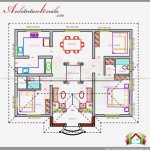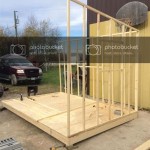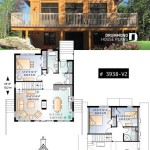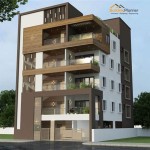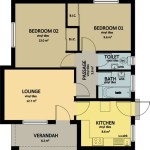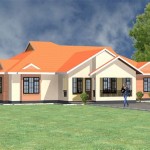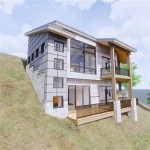Award Winning Lakefront House Plans: Designing for Distinction and Harmony
Lakefront living presents a unique opportunity to blend architectural design with the natural beauty of a water-rich environment. Award-winning lakefront house plans stand out not only for their aesthetic appeal but also for their thoughtful integration of site-specific considerations, sustainable practices, and innovative design elements. These plans represent the pinnacle of residential architecture, showcasing how careful planning can transform a dwelling into a harmonious extension of the surrounding landscape.
The creation of an award-winning lakefront home is a multi-faceted process that requires a deep understanding of the local climate, topography, and regulatory constraints. Architects must carefully consider factors such as prevailing winds, sun angles, and potential flood risks to develop a design that is both beautiful and functional. Moreover, adherence to environmental regulations and a commitment to sustainable building practices are paramount in ensuring that the home minimizes its impact on the delicate lake ecosystem.
Prioritizing Site Integration and Views
A defining characteristic of award-winning lakefront house plans is their seamless integration with the surrounding environment. These designs prioritize the maximization of lake views from various vantage points within the home. Strategic placement of windows, balconies, and outdoor living spaces ensures that residents can fully appreciate the beauty of the water and the surrounding landscape. Careful consideration is given to the orientation of the house to capture optimal sunlight and minimize glare, enhancing the overall comfort and energy efficiency of the dwelling.
The topography of the site plays a crucial role in shaping the design. Architects often work to incorporate natural features such as rock outcroppings, mature trees, and existing contours into the overall plan. This approach not only preserves the natural integrity of the site but also adds to the unique character of the home. In some cases, the design may even be integrated with the lake itself, with features such as boat docks, swimming platforms, and waterfront decks that seamlessly blend the indoor and outdoor spaces.
The use of natural materials is another key element in achieving site integration. Award-winning lakefront homes often feature exteriors clad in wood, stone, or other materials that complement the surrounding landscape. These materials help to create a visual connection between the house and its environment, further enhancing the sense of harmony and integration. Interior design choices also reflect this emphasis on natural materials, with the use of wood floors, stone fireplaces, and other elements that bring the outdoors in.
Beyond aesthetic considerations, site integration also involves careful planning for accessibility and functionality. The design must provide convenient access to the lakefront, with pathways, stairs, or ramps that facilitate movement between the house and the water. Considerations must also be given to drainage and erosion control to protect the shoreline and prevent environmental damage. A well-integrated design will address all of these factors in a way that is both aesthetically pleasing and environmentally responsible.
Embracing Sustainable Design Principles
Sustainability is an increasingly important consideration in all aspects of residential architecture, and award-winning lakefront house plans are no exception. These designs often incorporate a range of green building strategies that minimize the environmental impact of the home while enhancing its energy efficiency and indoor air quality. Sustainable design principles are not merely add-ons but rather integral aspects of the overall design concept.
Energy efficiency is a primary focus of sustainable lakefront homes. The use of high-performance insulation, energy-efficient windows and doors, and advanced heating and cooling systems can significantly reduce energy consumption. Solar panels, geothermal systems, and other renewable energy sources may also be incorporated to further minimize the home's carbon footprint. Smart home technology can be used to optimize energy usage and provide residents with greater control over their energy consumption.
Water conservation is another critical aspect of sustainable lakefront design. Low-flow plumbing fixtures, rainwater harvesting systems, and drought-tolerant landscaping can help to reduce water consumption and protect the lake's water quality. Graywater recycling systems, which reuse wastewater from showers and sinks for irrigation, can further minimize water usage. Careful planning of the landscape can also help to reduce runoff and prevent erosion, protecting the lake from pollution.
Material selection plays a key role in sustainable building practices. Award-winning lakefront homes often feature materials that are locally sourced, recycled, or sustainably harvested. The use of low-VOC (volatile organic compound) paints, adhesives, and other building products can improve indoor air quality and reduce the risk of respiratory problems. Durable and long-lasting materials are also preferred, as they reduce the need for frequent replacements and minimize waste.
Sustainable construction practices are also essential for minimizing the environmental impact of the building process. Careful planning and management of construction waste can reduce the amount of material that ends up in landfills. Erosion control measures can prevent soil runoff and protect the lake's water quality. The use of low-impact construction equipment and techniques can minimize disturbance to the surrounding environment.
Innovating with Architectural Design and Technology
Award-winning lakefront house plans are often characterized by their innovative use of architectural design and technology. These designs push the boundaries of traditional residential architecture, incorporating new materials, construction techniques, and technologies to create homes that are both aesthetically stunning and functionally advanced. Innovation is not simply about incorporating the latest trends but rather about finding creative solutions to the unique challenges and opportunities presented by the lakefront environment.
Open floor plans are a common feature of modern lakefront homes, creating a sense of spaciousness and maximizing views of the water. Large expanses of glass, such as floor-to-ceiling windows and sliding glass doors, blur the boundaries between indoor and outdoor spaces. These design elements allow natural light to flood the interior of the home, creating a bright and airy atmosphere. Strategic use of skylights and clerestory windows can further enhance natural lighting.
Smart home technology is increasingly integrated into lakefront homes, providing residents with greater control over their home's systems and enhancing their overall comfort and convenience. Automated lighting, heating, and security systems can be controlled remotely through smartphones or tablets. Voice-activated assistants can be used to manage various aspects of the home, from playing music to adjusting the thermostat. Smart irrigation systems can optimize water usage and prevent overwatering.
Advanced construction techniques are often employed to create homes that are both structurally sound and visually striking. Prefabricated components, such as wall panels and roof trusses, can be used to speed up the construction process and reduce waste. Modular construction, in which the entire home is built off-site and then transported to the lakefront, offers another way to minimize disruption to the environment. 3D printing technology is also beginning to be used in residential construction, allowing for the creation of complex and customized architectural elements.
The design of outdoor living spaces is another area where innovation is evident. Award-winning lakefront homes often feature elaborate decks, patios, and outdoor kitchens that extend the living space beyond the walls of the house. Outdoor fireplaces, swimming pools, and hot tubs add to the luxury and enjoyment of the lakefront experience. Careful planning of the landscape can create a seamless transition between the indoor and outdoor spaces, enhancing the overall sense of harmony and connection with nature.
Ultimately, award-winning lakefront house plans represent a commitment to excellence in design, sustainability, and innovation. These homes are not simply structures but rather carefully crafted environments that enhance the lives of their residents and celebrate the beauty of the lakefront landscape. The thoughtful integration of site considerations, sustainable practices, and innovative design elements creates homes that are both aesthetically stunning and environmentally responsible, setting a new standard for residential architecture.

New American Best Vacation House Plans And Cabin Photos

The Best Homes For Lakefront Living House Designers

The Best Homes For Lakefront Living House Designers

Waterfront House Plans In Beautiful British Columbia

Lake House Plans

Affordable And View Worthy Lake Homes Dfd House Plans Blog

Lakefront Home Plan With Porch Deck 158 1153

Best Lake House Plans Waterfront Cottage Simple Designs

Best Lake House Plans Ideas And Home Design Architecturesstyle

Lake House Plans Waterfront Monster

